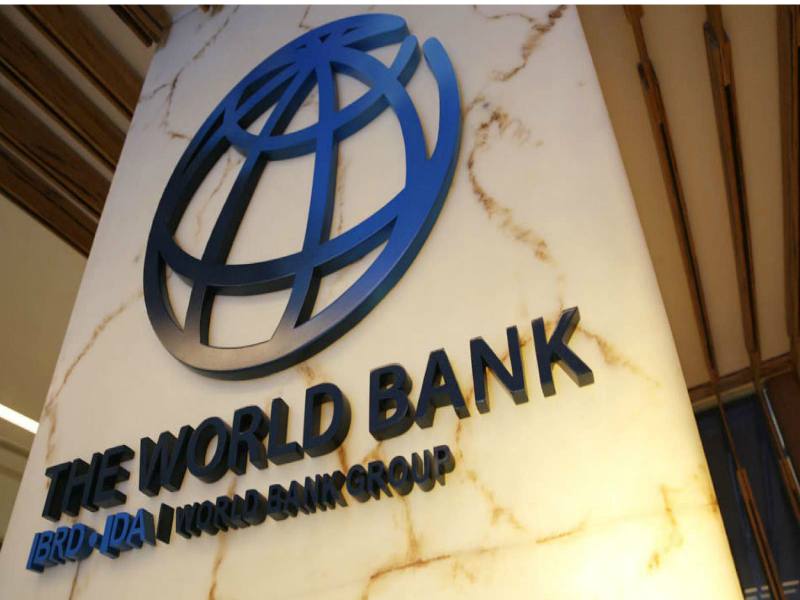Economy
World Bank Forecast Uneven Recovery in Middle East and North Africa

GDP will grow 5.2% by end 2022, but Ukraine war and COVID-19 add to uncertainty
Economies in the Middle East and North Africa (MENA) region are expected to grow by 5.2% in 2022, the fastest rate since 2016, on the back of oil-price windfalls benefitting the region’s oil exporters. But heightened uncertainty surrounds this forecast due to the war in Ukraine and ongoing threats from COVID-19 variants.
Titled “Reality Check: Forecasting Growth in the Middle East and North Africa in Times of Uncertainty”, the World Bank’s latest economic update forecasts an uneven recovery as regional averages mask broad differences. Oil-producers will benefit from higher oil prices and vaccination rates as fragile countries lag. But tighter global monetary policy, the unpredictability of the course of the pandemic, ongoing supply chain disruptions and food price hikes raise inflation risks for the entire region.
“The harsh reality is that no one is out of the woods yet. The threat of COVID-19 variants remains and the war in Ukraine has multiplied risks, particularly for the poor who bear the brunt of the increase in food and energy prices. A good dose of realism about the region’s growth prospects during these times of uncertainty is essential,” said Ferid Belhaj, World Bank Vice President for the MENA region. “Managing this wave of uncertainty is a key challenge for policymakers and the World Bank is committed to working alongside governments across the MENA region during this time of compounding risks,” he added.
Currency depreciation in some countries in MENA is already adding to inflationary pressures. Economies facing fiscal and debt vulnerabilities will likely encounter more challenges as they roll over existing debt, or issue new debt amid tighter financing conditions as global central banks aim to contain inflation expectations.
Inflationary pressures created by the pandemic have been exacerbated by the Ukraine war. Countries in the MENA region rely heavily on food imports, including wheat from Russia and Ukraine. The rise in food prices and the higher risk of food insecurity are likely to hurt poor families the most, because the poor tend to spend more of their household budget on food and energy than do rich households. The full extent of the consequences of the war are yet to be determined, but early signs point to a heightening of the economic difficulties already besetting MENA economies, particularly oil-importing middle-income countries.
Despite the projected growth rate of 5.2%, GDP per capita, an indicator of people’s living standards, will barely exceed pre-pandemic levels due to a generally lackluster performance in 2020-2021, the report said. In Gulf Cooperation Council countries, buoyed by the increase in oil prices, GDP per capita is projected to grow by 4.5% in 2022, but will not recover to pre-pandemic levels until 2023. In contrast, in 2022, GDP per capita of middle-income oil exporters is projected to grow by 3.0%, and by 2.4% for the region’s oil importers, both barely lifting living standards above pre-pandemic levels. Overall, if these forecasts materialize, 11 out of 17 economies in MENA may not recover to pre-pandemic levels by end of 2022.
Adding to pandemic-related uncertainty, only a third of the middle-income MENA countries have higher vaccination rates than their income peers. As of April 4, 2022, Gulf countries, excluding Oman which has a 57.8% vaccination rate, have an average rate of 75.7%, which is far better than their income peers. But countries like Algeria and Iraq have vaccinated around 13 to 17% of their populations and Yemen and Syria have vaccination rates in the single digits, thus leaving them more exposed to the economic and health consequences of Covid-19 in the near future.
Each MENA Economic Update chooses a special focus area and this April’s edition provides a reality check on growth forecasts over the past decade, including those provided by the World Bank, the International Monetary Fund, and the private sector. Economic forecasts are a valuable tool for governments as they prepare for the future, especially during times of uncertainty. The authors found that growth forecasts in the MENA region over the past decade were often inaccurate and overly optimistic when compared to those of other regions. Overly optimistic forecasts can lead to economic contractions down the road. A key driver of forecast uncertainty is the availability and accessibility of quality and timely information, an area where MENA lags behind the rest of the developing world.
“In the current context of global and regional uncertainty, getting the most accurate forecasts possible becomes even more important. Lack of data and limited data openness are risky strategies. Only with better and more transparent data can forecasts, and with them planning and policy formulation, improve,” said Roberta Gatti, World Bank Chief Economist for the MENA region.
Conflict economies such as Libya and Yemen have outdated GDP data, last available for 2014 and 2017 respectively. Only 10 out of the 19 MENA economies covered by the World Bank Group have monthly or quarterly information on industrial production; for the remaining nine, information is not publicly available; and none publish monthly unemployment data. The report provides guidance about how to improve national data systems.